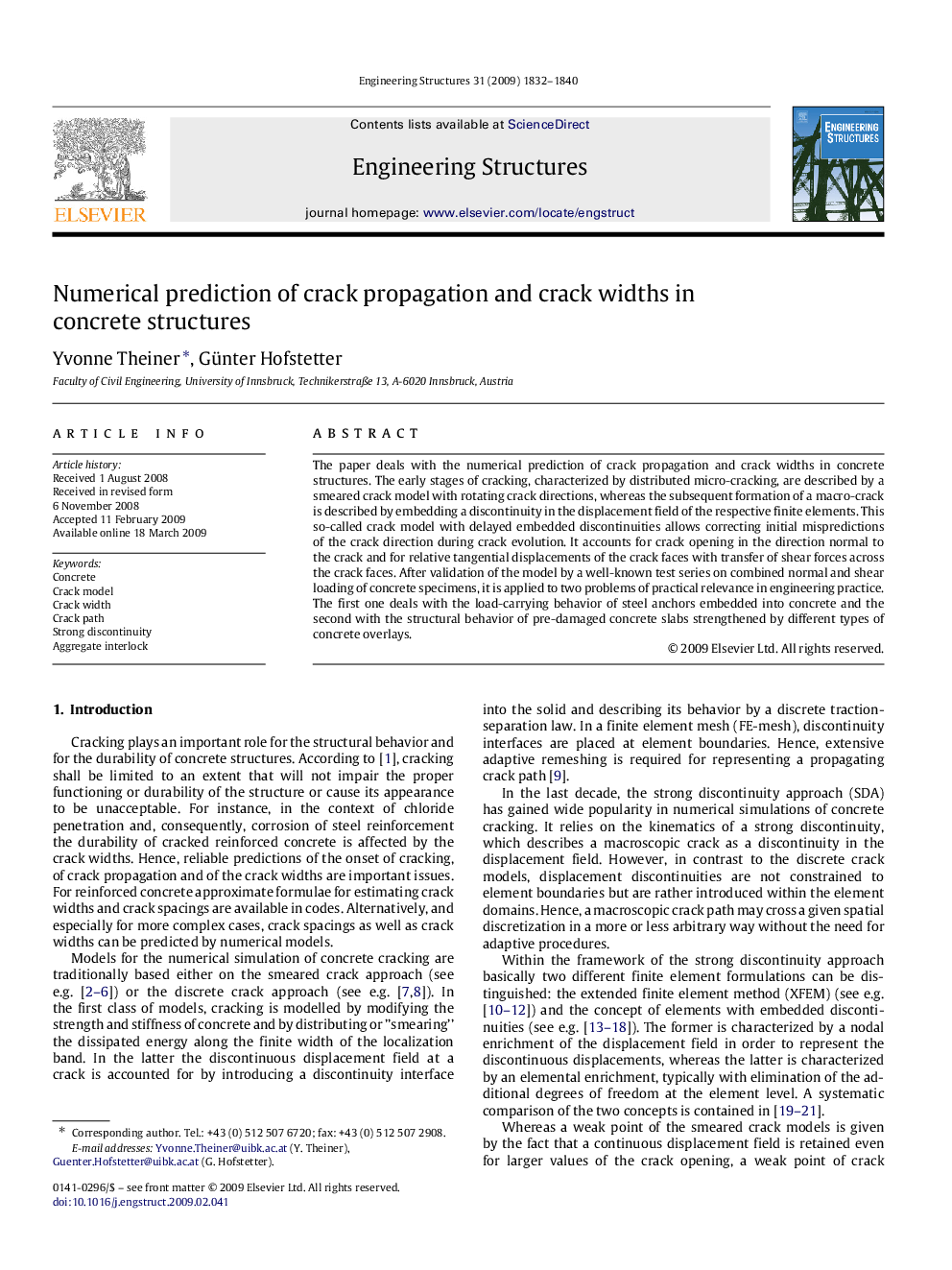| Article ID | Journal | Published Year | Pages | File Type |
|---|---|---|---|---|
| 268413 | Engineering Structures | 2009 | 9 Pages |
The paper deals with the numerical prediction of crack propagation and crack widths in concrete structures. The early stages of cracking, characterized by distributed micro-cracking, are described by a smeared crack model with rotating crack directions, whereas the subsequent formation of a macro-crack is described by embedding a discontinuity in the displacement field of the respective finite elements. This so-called crack model with delayed embedded discontinuities allows correcting initial mispredictions of the crack direction during crack evolution. It accounts for crack opening in the direction normal to the crack and for relative tangential displacements of the crack faces with transfer of shear forces across the crack faces. After validation of the model by a well-known test series on combined normal and shear loading of concrete specimens, it is applied to two problems of practical relevance in engineering practice. The first one deals with the load-carrying behavior of steel anchors embedded into concrete and the second with the structural behavior of pre-damaged concrete slabs strengthened by different types of concrete overlays.
